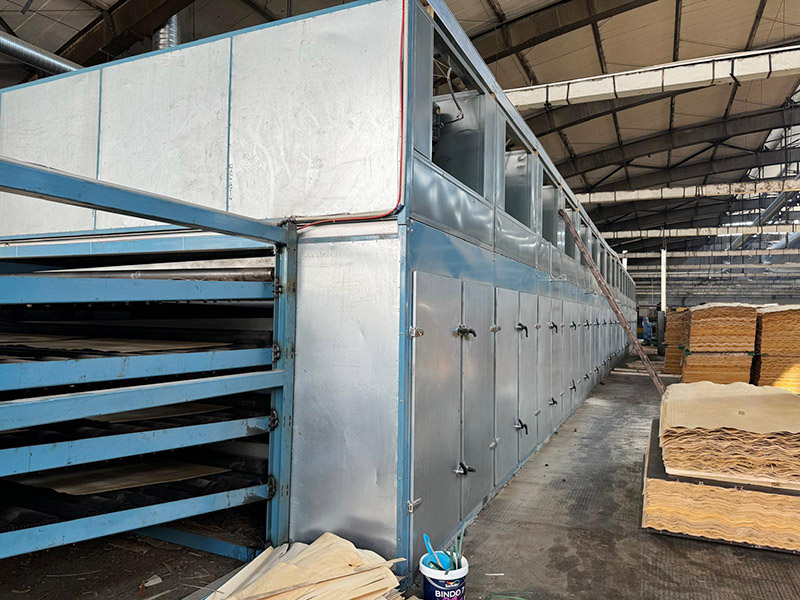As the core equipment in the production of plywood and wood-based panels, veneer dryers directly affect the quality, output and production cost of the boards. Many customers will encounter some common problems during the purchase or use process. We combine customer feedback and technical experience to answer your questions.
1. What types of wood are suitable for veneer dryers?
Common woods such as poplar, eucalyptus, rubber wood, birch, fir, and paulownia are suitable for veneer dryers, especially wet veneers after rotary cutting, which generally have a high moisture content (40%-80%). The veneer dryer is needed to reduce its moisture content to about 10% to meet the needs of the plywood pressing process.
2. How long does it take to dry veneers of different thicknesses?
Generally speaking, the drying time of 0.8-8mm thick veneers is closely related to the equipment structure, temperature setting, and feed speed. For example, 2mm thick poplar veneer usually takes about 8-15 minutes to dry when the temperature is set at 160-180°C. Our veneer drying equipment can automatically adjust the speed and temperature according to the thickness and moisture content.
3. What are the reasons for uneven drying?
The main factors causing uneven drying include: unstable temperature control, too thick veneer stacking, unreasonable conveying speed setting, and blockage of the internal air duct of the equipment. It is recommended to regularly check the fan, heat exchange system and transmission chain to ensure the good operation of the equipment.
4. How to reduce energy consumption?
The key is to choose equipment with heat recovery device and automatic control system. For example, Shenghuai series veneer dryer can achieve energy saving of more than 30% through heat exchange system and automatic control system. Reasonable arrangement of shifts and production plans can also effectively reduce energy consumption per unit output.
5. What should I do if the veneer cracks after drying?
It is mainly because the drying temperature is too high or the speed is too slow, which causes rapid evaporation of moisture. It is recommended to adjust the hot air temperature below 160°C and gradually optimize the feeding speed to avoid stress cracks caused by excessive differences in the evaporation rate of moisture inside and outside the veneer.

Copyright By © Shandong Shine Machinery Co.,Ltd